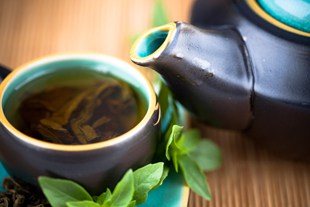The Health Benefits of Tea
Tea is second only to water in its global consumption. In western countries, the most widely drunk tea is black tea, prepared from leaves that have been fermented and oxidized. About half of the adult population drinks 2 to 3 cups a day. By contrast, oolong tea is partially oxidized and green tea is minimally processed before drying. This creates a range of different flavors, astringencies and caffeine content (which is generally greater the less processing). In each case, the tea leaf is then steeped in hot or boiling water to release the complex mixture of chemicals contained within.
The health properties of tea are readily confused with the stimulant effects of its caffeine content. Black teas contain about half the caffeine of most coffees, while many green teas contain more caffeine than coffee. Contained within the tea leaf are also a number of beneficial compounds including flavonoid antioxidants (catechins or tannins, vitamins and minerals. Some, but not all, of these are lost or transformed during prolonged drying and oxidization required to make to make the tea leaves black.
Adding milk to black tea may also reduce the availability of antioxidants. Nonetheless, health benefits have been described in adults drinking 2-3 cups of black tea a day. For example, a regular cup of tea is associated with a small reduction in the risk of heart attacks and strokes. Tea drinking may also improve bone density and reduce the risk of fractures in women.
Green Tea and Disease Prevention
Green teas have a greater antioxidant potential, and with it, potentially greater benefits for human health. A number of studies have shown that the intake of green tea is associated with reduced rates of some cancers, heart disease and cognitive decline with advancing age. It should be remembered to never brew green tea with boiling water, as this can damage some of its antioxidants, as well as increase the release of caffeine and other bitter tasting compounds. Because not everyone likes the taste or has time to drink three cups a day, extracts are available that can be taken in pill form, standardized to contain 80% total polyphenols and 55% epigallocatechin gallate.






